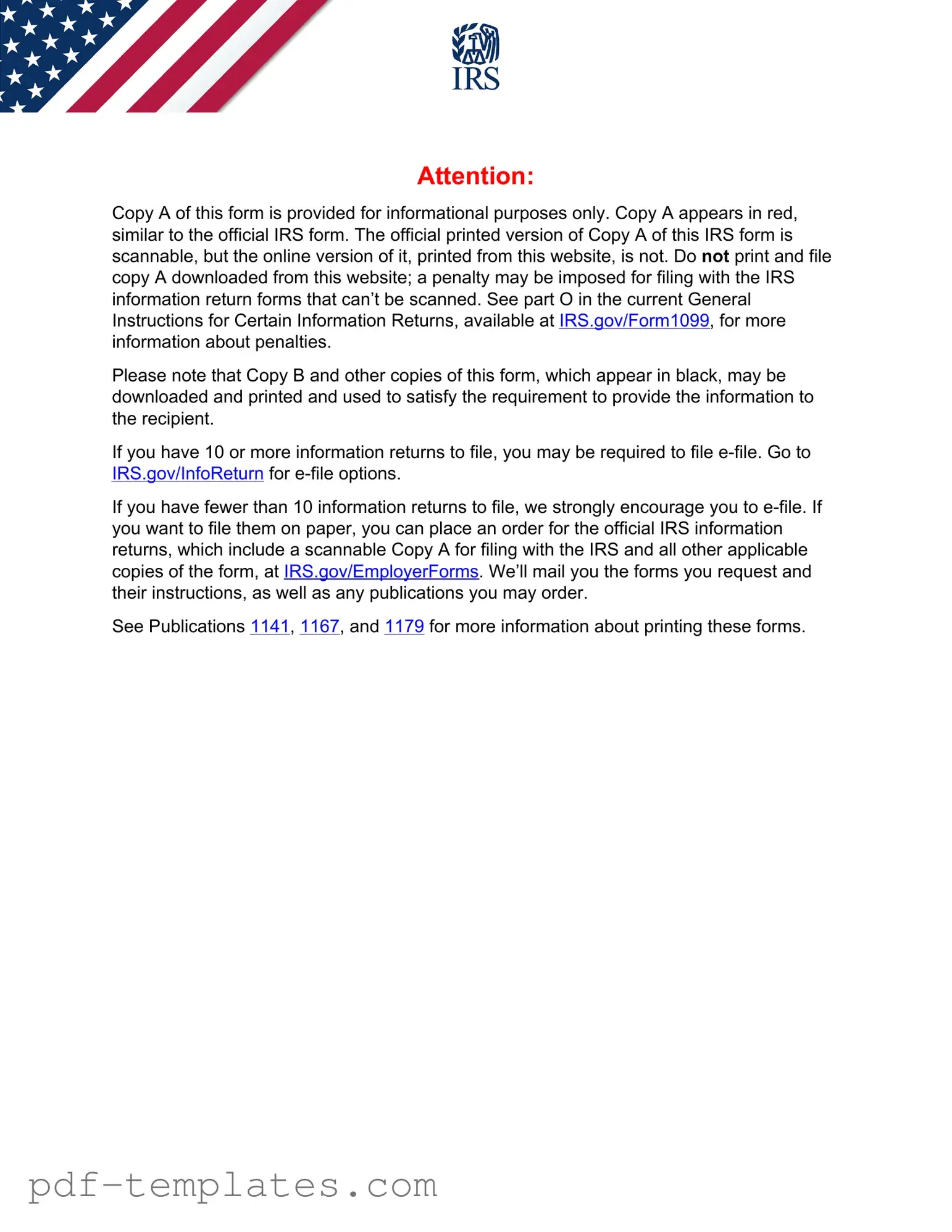The IRS 1099-NEC form is similar to the 1099-MISC in that both are used to report income received by non-employees. The 1099-NEC specifically focuses on payments made to independent contractors and freelancers, while the 1099-MISC covers a broader range of income types, including rents and royalties. Both forms require the payer to provide the recipient's taxpayer identification number and the amount paid during the tax year.
The 1099-DIV form is another document that shares similarities with the 1099-MISC. This form is used to report dividends and distributions to shareholders. Like the 1099-MISC, it is issued by the payer and includes the recipient's information and the total amount received. Both forms are essential for recipients to accurately report their income on tax returns.
The 1099-INT form is used to report interest income. It is similar to the 1099-MISC in that it requires the payer to provide information about the recipient and the amount paid. Recipients of interest income must report this on their tax returns, just as they do with the income reported on the 1099-MISC.
The 1099-G form reports government payments, such as unemployment benefits or state tax refunds. This form, like the 1099-MISC, is issued by the payer and includes details about the recipient and the total amount received. Recipients must report this income on their tax returns, ensuring compliance with tax regulations.
Understanding the nuances of the various tax documents can be essential for effective financial planning and compliance. While many forms, like the IRS Form 1099-NEC that reports payments to independent contractors, serve distinct purposes, they all contribute to a comprehensive understanding of income reporting. For those navigating estate planning in California, the topic expands further with tools like the Transfer-on-Death Deed, which simplifies the transfer of real estate. For detailed guidance on this and more, visit All California Forms.
The 1099-R form is used to report distributions from retirement accounts. It shares similarities with the 1099-MISC in that it provides information about the recipient and the amount distributed. Both forms are critical for recipients to accurately report their income and understand their tax obligations.
The 1099-S form is utilized for reporting proceeds from real estate transactions. Similar to the 1099-MISC, it requires the payer to provide the recipient's details and the total amount received. Both forms play a significant role in ensuring that recipients report their income correctly for tax purposes.
The 1099-C form reports canceled debts. This form is similar to the 1099-MISC in that it is issued by the creditor and includes information about the debtor and the amount of debt canceled. Recipients must report this income, as canceled debts can be considered taxable income.
The 1099-B form is used to report proceeds from broker and barter exchange transactions. Like the 1099-MISC, it requires the payer to provide the recipient's details and the total amount received. Recipients must report this income to ensure accurate tax reporting and compliance.
The 1099-K form reports payment card and third-party network transactions. This form is similar to the 1099-MISC in that it includes information about the recipient and the total amount processed. Recipients must report this income, ensuring they meet their tax obligations.
Lastly, the 1099-LTC form reports long-term care benefits. This document is similar to the 1099-MISC as it is issued by the payer and includes information about the recipient and the benefits received. Recipients must report these benefits on their tax returns, just as they would with the income reported on the 1099-MISC.
